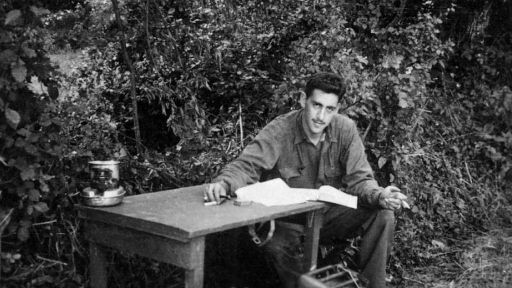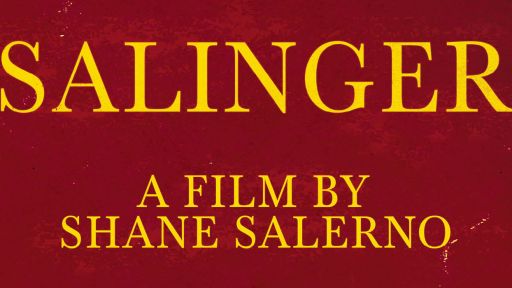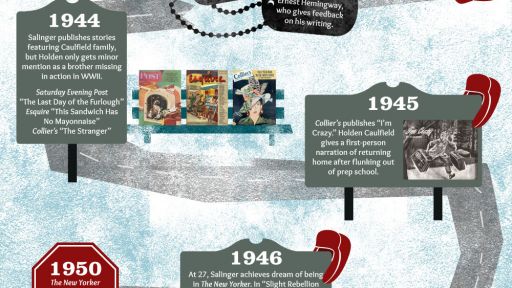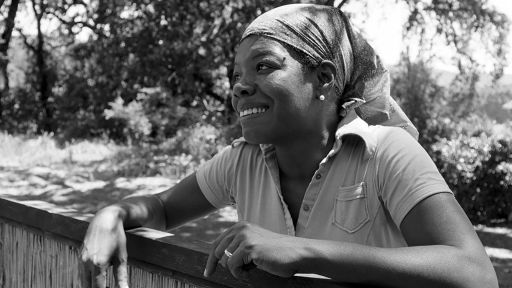Timeline of major events in the life of writer J.D. Salinger (Jan 1, 1919 – Jan 27, 2010), including his education, relationships and literary achievements.
Jan 1, 1919
Jerome David Salinger is born in New York City
Jerome David Salinger is the second and last child of a Scotch-Irish mother named Miriam Jillich Salinger and a Jewish father named Sol Salinger. He has one sibling, a sister named Doris.
1930
Salinger the actor
Salinger attends an affluent summer camp, Camp Wigwam, in Harrison, Maine. Salinger performs in at least four plays and is voted the most popular actor by counselors and fellow campers.
1932
Salinger attends McBurney School
While living at 1133 Park Avenue, Salinger’s parents enroll him in Manhattan’s exclusive McBurney School for ninth and tenth grades.
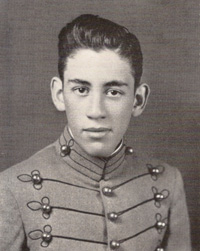 1934
1934
Salinger fails out of McBurney and is sent off to Valley Forge Military Academy
After failing out of McBurney, Salinger’s parents send him to Valley Forge Military Academy in Wayne, Pennsylvania. He later uses the school as something of a model for Pencey Prep, Holden Caulfield’s alma mater in The Catcher in the Rye.
1935
Salinger announces intention to be a writer
Salinger’s senior year at Valley Forge begins. He serves as the literary editor of the Class of ’36’s yearbook, Crossed Sabres, and announces his intention to write for the prestigious New Yorker magazine.
1936
Salinger’s freshman Year at NYU
Salinger enters New York University as a freshman.
1937
Salinger Drops Out of NYU
Salinger drops out of NYU in the spring of his freshman year. In the fall he reluctantly moves to Vienna, Austria, to study the meatpacking business on the advice of his father Sol.
1939
Whit Burnett and Columbia University
Salinger enrolls in a writing course at Columbia University that is taught by Whit Burnett, the editor of Story magazine. Burnett encourages the young writer’s career, and becomes a friend and mentor.
March 1940
“The Young Folks”
Salinger publishes his piece of fiction, “The Young Folks,” in Story magazine. Salinger’s writing continues to be championed by Burnett who will publish other early Salinger pieces in Story.
December 1941
“Slight Rebellion Off Madison”
After several rejections, The New Yorker finally accepts one of Salinger’s stories. “Slight Rebellion Off Madison,” the first Salinger story to feature Holden Caulfield. The story is not published because of Pearl Harbor. It sits on the shelf to be published five years later.
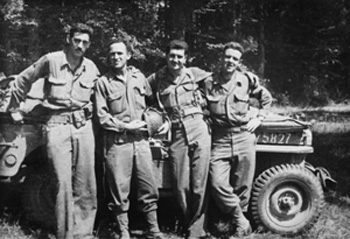 1942
1942
Salinger off to War
After initially being rejected, Salinger is drafted into the U.S. Army, where he has a distinguished military career as a Counter-Intelligence Agent assigned to the 4th Division. Among other accomplishments, he takes part in the Battle of the Bulge and, later, enters Kaufering, a sub-camp of Dachau. He also forges a strong friendship with war correspondent Ernest Hemingway. Salinger continues his writing career during the war, carting his typewriter around in his Jeep. His experiences in the war leave a deep impression on him and prove to be the transformative trauma of his life and career. His writing is changed forever. After the war, Salinger checks himself into a mental hospital and is treated for “combat fatigue” which was post-traumatic stress syndrome.
June 6, 1944
Salinger’s first day of combat is D-Day
On D-Day, Salinger lands on Utah Beach and participates in the invasion of Normandy, France as a member of the Fourth Division.
1945
Salinger Marries Sylvia Welter
Salinger marries a German woman named Sylvia Welter. They live together only eight months, and the marriage officially ends when Salinger files for an annulment.
1948
“A Perfect Day for Bananafish”
After rejecting Salinger many times, The New Yorker publishes his short story “A Perfect Day for Bananafish,” the first to feature a character from the fictional Glass family. The story causes a sensation. Salinger signs a contract with the magazine, promising to let them have first opportunity at publishing any of his future stories.
1949
Samuel Goldwyn purchases the rights to “Uncle Wiggily in Connecticut”
My Foolish Heart, a film adaptation of Salinger’s story “Uncle Wiggily in Connecticut,” premieres. The movie is ripped apart by critics. Salinger finds the experience so miserable that he never formally authorizes another film version of his work.
July 16, 1951
The Catcher in the Rye is published
The Catcher in the Rye is published by Little, Brown and Company. The novel’s success offers Salinger instant fame, which Salinger quickly realizes he doesn’t want. He begins the process of retreating from public life.
1952
Salinger turns to religion to heal his post-traumatic stress syndrome
After practicing Buddhism for several years, Salinger becomes deeply interested in the texts of Advaita Vedanta Hinduism. His interest in religion spans his adult life, and he also dabbles in Christian Science and Dianetics, the precursor to Scientology.
1953
Salinger’s short story collection Nine Stories is published
Nine Stories, a book of short stories about the Glass family, is published. In the same year, Salinger moves from New York City to Cornish, New Hampshire, the small town where he lives until his death in 2010.
February 17, 1955
Salinger Marries Claire Douglas
Salinger marries Claire Douglas, a student at Radcliffe College (which was the sister school of all-male Harvard). As a wedding present, he presents her with a copy of a story about the character Franny Glass, who is partially inspired by his new wife.
December 10, 1955
Margaret Salinger is born
The couple’s daughter Margaret is born. Family and friends call her Peggy.
February 13, 1960
Matt Salinger is born
Matthew Salinger is born. In the years ahead, he will enjoy a lifelong friendship with his father and fiercely protect his privacy.
September 1961
Franny and Zooey
Franny and Zooey is published and immediately becomes a #1 New York Times bestseller. The book consists of two long stories, one about Franny Glass (based on Salinger’s wife, Claire) and the other about her brother Zooey.
1963
Salinger publishes his last book
Salinger publishes a book of two novellas entitled Raise High the Roof Beam, Carpenters and Seymour: An Introduction. It is the last book he publishes. It was the #3 bestselling book of 1963 in the United States.
June 19, 1965
Salinger publishes his last story “Hapworth 16, 1924”
Salinger’s short story “Hapworth 16, 1924” appears in The New Yorker. The story remains his last published work, though numerous witnesses report him writing every day and filing his work away to be published posthumously.
October 3, 1967
Divorce:
Salinger and Claire Douglas divorce after 12 years of marriage, finalizing a long separation.
1972
Short relationship with 18-year old Yale student Joyce Maynard
Salinger reads an essay in The New York Times Magazine by a Yale University freshman named Joyce Maynard. He is taken with her photo and begins a correspondence with her which leads to her dropping out of Yale and briefly living with Salinger in New Hampshire. At the time of their relationship, Maynard is 18 years old and Salinger is 53.
November, 1974
The world’s most famous recluse calls The New York Times
J.D. Salinger calls Lacey Fosburgh at The New York Times to protest the unauthorized publication of a collection of his early stories. During the call Salinger admits that he is writing every day but only for himself. He says there is a “marvelous peace” in not publishing. A story about Salinger breaking his silence is published on the front page of The New York Times the next day.
1979
A fan visit with Salinger
Michael Clarkson, a passionate fan of Salinger’s, visits the author without invitation in New Hampshire. Clarkson publishes an article about the visit and quotes Salinger as saying “I’ve made my stand clear. I’m a private person. Why can’t my life be my own?”
1980
A journalist lands an interview with Salinger
Betty Eppes publishes an article about her visit with Salinger. Salinger is quoted as saying, “There’s no more to Holden Caulfield. Read the book again, it’s all there. Holden Caulfield is only a frozen moment in time.”
1980
John Lennon murdered
John Lennon is murdered by assassin Mark David Chapman in New York City. After killing Lennon, Chapman sits down and starts to read The Catcher in the Rye. Chapman is the first of several of assassins who cite The Catcher in the Rye as inspiration for shootings and murders of public figures including President Ronald Reagan and actress Rebecca Schaeffer.
1982
Salinger out on the town
Salinger, now 63-years-old, travels to Jacksonville, Florida, to visit his new girlfriend, the 37-year old actress Elaine Joyce, who is performing at a local dinner theater.
1986
Salinger blocks a biography
After learning that critic Ian Hamilton is preparing to write a biography about him using his letters as a central element of the book, Salinger sues Hamilton to block the book’s publication. The biography, In Search of J.D. Salinger, is heavily rewritten and eventually published in 1988.
1992
A fire at Salinger’s house
Various newspapers report a fire has consumed half of Salinger’s house in Cornish, New Hampshire. The emergency call was made by Salinger’s third wife Colleen O’Neill, who is 40 years his junior.
1998
Joyce Maynard sells out Salinger
Joyce Maynard auctions off the letters Salinger wrote to her during their brief relationship. In the same year, she publishes her memoir At Home in the World, which contains detailed and intimate descriptions of her relationship with Salinger. In a final heated meeting while Maynard’s book was being written Salinger told her, “You have spent your life writing meaningless garbage and now you mean to exploit me.”
1999
News that Salinger’s secret safe is filled with work
In March of 1999, Jerry Burt of Plainfield, New Hampshire, a former neighbor who was friendly with Salinger, told the Associated Press that Salinger told him “he was keeping a stack of manuscripts in a safe.”
2000
Margaret Salinger writes a memoir
Salinger’s daughter Margaret (Peggy) publishes a memoir of growing up with the writer. The book, Dream Catcher, is extremely critical of Salinger, who cut off contact with his daughter when he learned she was writing a tell-all. After its publication, Salinger’s son Matt refutes his sister’s account of their childhood.
2000
Margaret Salinger is eyewitness to Salinger’s special filing system
On September 13, 2000, Margaret Salinger told NPR’s Diane Rehm, “I do know he’s been working all these years because, probably the second time I’d ever been allowed in his study, he very proudly showed me a set of files, where a red dot meant this is ready to go upon my death, a green dot meant this needs editing, but it’s okay. It just needs some editing.”
June 2009
Salinger stops an unauthorized sequel to The Catcher in the Rye
Salinger sues to block the publication of 60 Years Later: Coming Through the Rye, an unauthorized sequel to The Catcher in the Rye. The book is written by an author reportedly named John David California, who was apparently less familiar with Salinger’s litigious nature than with the book.
January 27, 2010
Death of J.D. Salinger
At the age of 91, J.D. Salinger passes away in New Hampshire. The world mourns the loss of one of its most talented, and reclusive, voices. The Salinger family released a final statement from Salinger that read: I am in this world but not of it. This was the explicit fulfillment of central idea of the fourth and final stage of his Vedantic beliefs: renunciation of the world.
2013
Forty years of writing in secret will see publication
In 2013, new light is shed on Salinger’s life and work. Shane Salerno and David Shields published a biography of the famed writer entitled Salinger which became a New York Times bestseller. One of its many revelations is that there are at least five unpublished works by Salinger that are scheduled to be released sometime between 2015 and 2020. Salerno also created a film documentary on Salinger, which debuted around the same time as his book with Shields. It was theatrically released by The Weinstein Company and subsequently appeared as the 200th episode of the Academy- and Emmy-winning PBS series American Masters on January 21, 2014.

